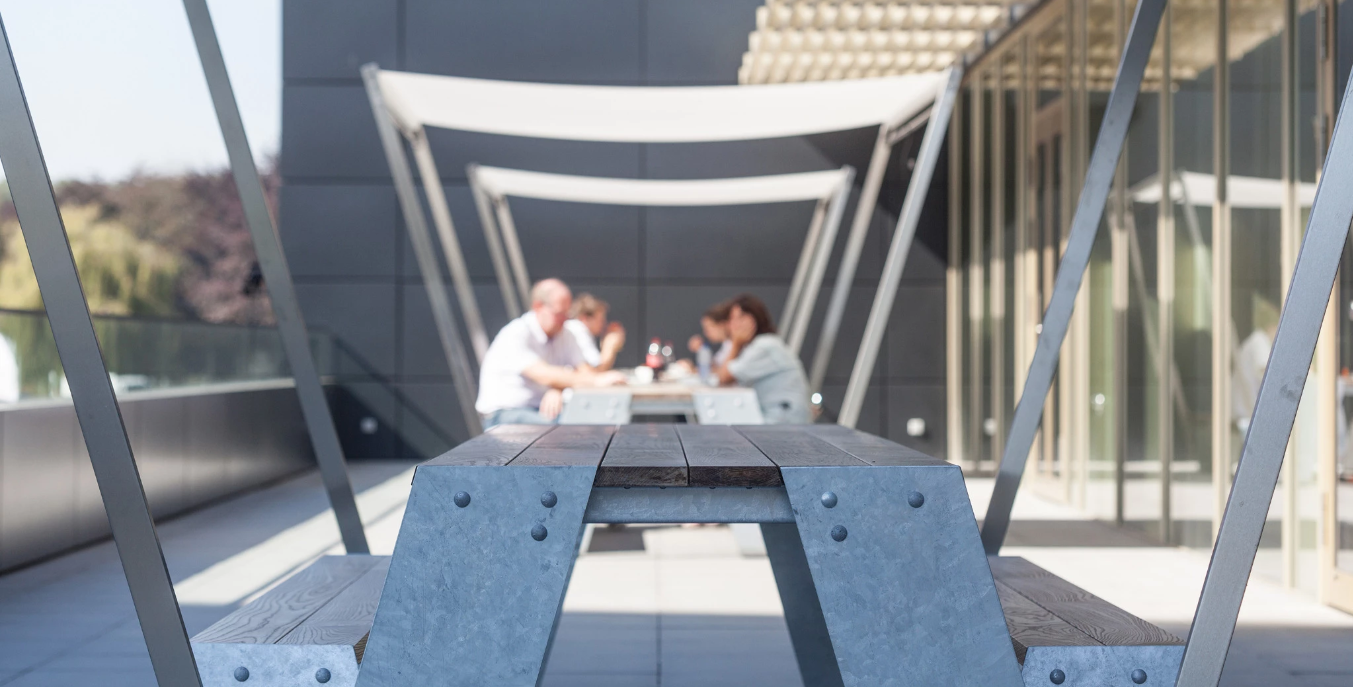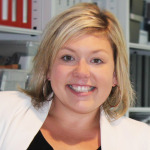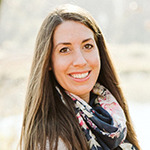
Danielle Fetzer is a Business Development Manager for our Wisconsin and Illinois region. She’s recently been reaching out to local business professionals to find out how they’re navigating these uncertain times and will be sharing these insights over the next few weeks.
We can all agree that work life, personal life and everything in between has been challenging over the past few months. As we move forward and understand how companies continue to thrive, we need to consider when does it make sense for us to (safely) come back together?
Human beings are inherently social. There is a natural chemistry we create by being together in professional and social settings. That chemistry often leads to the creation of new ideas, coming up with solutions to problems, new processes to streamline efforts, and simply getting to know each other and learning from one another culturally. If this is what we KNOW about being together, I wonder how this plays a part in the experience of workplaces and social spaces moving forward? Will COVID-19 change how the world utilizes these spaces?
Lots of questions with no one-size-fits-all answer. At Atmosphere, we believe that furniture is a tool (one of many) that helps to facilitate a better experience in work and social environments. So naturally I am interested in how today’s organizations are thinking about these principles moving forward. I reached out to a few HR experts at thriving companies to get their point of view:
|
Amy Jones |
Laura Cullen |
Ashley Matthys |
What does the employee experience mean to you and your organization?
Amy Jones: Our goal is to create a personalized experience for all employees at Didion. We really try to consider and know the whole employee – professional ambitions, family life, interests, etc. For when you know your people, support and commitment follow effortlessly. Our philosophy at Didion is centered around hiring smart people, giving them autonomy, providing guidelines to assist, then believing that truly amazing things will happen from there.
An example of success through this model: When the COVID-19 outbreak occurred, our ethanol sales margins significantly decreased. In a matter of 3 weeks our team transitioned our ethanol plant into producing industrial alcohol for the hand sanitizer market to make up for that revenue loss. Production of this product will now be a portion of our business efforts moving forward.
Laura Cullen: Our company’s strategic mission – identify, hire, train and retain. The employee experience is embedded in all four of these principles. We try to hire diversity within our departments for a wider range of collaboration. JP Cullen has allocated a specific job (me) to align training + development goals with our people and business. We believe in development of the individual will result in taking better care of our clients long-term. Then retention has largely to do with building an employee’s relationship with their management and camaraderie amongst peers. Overall, JP Cullen builds buildings and people for a strong future.
Ashley Matthys: Palmer Johnson Power Systems employs a variety of different people and skill sets to work in parts distribution + equipment services, customer service, accounting, HR, etc. and needs to cover a wide lens when addressing the employee experience. It is important that our employee experience reflects our Core Values – the feeling of creating a “work family” and caring about each other, which means fostering a culture that provides well-rounded support/resources for our employees through robust benefits packages, personal and professional development, and wellness initiatives.
Does the physical workplace provide something the virtual cannot?
Amy Jones: Absolutely! Right now, our people are craving to be with one another. It’s an indication of how important people are to our culture. I do also worry about the mental health of everyone on our team during this time, especially those working remotely 100% of the time, People Leaders who are learning how to lead their teams remotely and parents who have the pressure of home schooling + full time jobs. Ergonomics are also much more challenging to deliver in a work from home environment.
Laura Cullen: The physical workplace allows for people to learn informally by simply keeping their eyes and ears open. When we are working remote we miss these spontaneous opportunities for learning and team engagement. One example is a new project that our team is working on, repairing the exterior of the State Capitol dome. I was walking past a conference room and an Engineer and Foremen were looking at aerial photos to plan for the crane use. Had I not been in the office, I would have not been able to learn what they go through to deliver a thoughtful project…. And tell you about it in our chat today!
Ashley Matthys: The physical workplace provides a better group training experience than anything done virtually. When you train with a group of people in person, there is an instant connection and comfort level established. The workplace and tools within it, allow for these connections and a better employee experience to happen. You are also able to read people’s body language and facial expressions in person, which helps in understanding their point of view.
Danielle Fetzer: Some of our clients are putting together work from home standard packages that allow employees to pick what they like from task seating to monitor arms. I do think working from home/virtual will be offered and taken advantage of more than ever before, as people begin to understand their comfort level re-entering public spaces. However, even with that, many organizations feel that place provides something that virtual definitely cannot. Place can bring us together and create lasting impressions, which turn into the building blocks for organizational success. This is true no matter what type of “place” you go to – office, educational facility, hotel, restaurant, or health facility. And on a larger level, that makes the community we inhabit stronger.
How does culture impact employee experience and has your company done anything during COVID-19 to maintain a workplace culture?
Amy Jones: At Didion, our core purpose is “Together, we make a difference – our team, in our community and with our Partners.” A great example of how we demonstrated this is, we have reserved 10% of the gallons produced of our Hand Sanitizer to donate to our community. With the help of our employees, we are identifying organizations who are keeping our community safe and making donations. To date, we have donated 1000 gallons to 44 organizations, worth $35,000 to our community. Our goal was to empower our employees to donate something they created with their own hands, that would have a positive impact in the communities in which we do business.
Laura Cullen: JP Cullen believes in caring for one another internally, but also continually asks how we can do more to support each other. This is embedded in our culture. When COVID-19 began to spread, our team in the field uncovered 3,000 masks from our stock for job sites and directly delivered them to hospitals in need.
Ashley Matthys: Culture and the employee experience definitely go hand in hand. You cannot have one without the other. In terms of maintaining culture – we have PJ Power Hour on Wednesdays with mental and physical wellness activities. We also have an event called Walk Off the Job, where we promote getting outdoors and away from your desk. Since the breakout of COVID-19, we have also employed intentional ½ hour collaboration sessions within every department. I foresee this quick and rapid communication style continuing forward.
Some of our Atmosphere clients have been considering outdoor spaces to bring their people together safely. Do you think the outdoors could be a strategy for organizations in making employees feel more comfortable about coming together?
Amy Jones: We are starting to think about how we can take what would normally be indoor work, outdoors. We have been discussing adding outdoor seating and meeting areas. We think this could be a win-win; it would positively impact our employees’ physical and mental health and allow us to create more areas where social distancing would be possible.
Danielle Fetzer: Our clients have been looking at furniture to make their outdoor spaces more useable. If we think this through…. Traditionally, outdoor spaces in the Wisconsin and Illinois area have not been considered primary because we do not have warm weather for much of the calendar year. But now is a better time than ever to consider the outdoor space! Investing in the outdoors (time spent and financially) provides a safer place for employees, and your ROI on the furniture is greater with being able to use it year after year. Hospitality is promoting the use of outdoor environments, and workplaces should do the same.
Laura Cullen: Well unlike some other industries, much of our work is primarily done outside. One of our project meetings that consists of the owner, construction project manager and executive oversight, architect and consultants was decided to be held outside the job trailer because we felt such a strong need to meet in person. Picnic tables were moved to be spaced according to social distancing and the team created a canopy structure for shelter.
Ashley Matthys: We already have a great outdoor space at our headquarters in Sun Prairie, Wisconsin, that we use frequently. This is equipped with tables and chairs at standing and seated height, beverage and food area and booth seating. We try to get outdoors whenever possible!
Other thoughts?
Ashley Matthys: I think it is important to mention that working through COVID-19 has proven that we can be effective and work from home. It has also forced people to understand technology faster than ever before. We have many different generations within our company and the transition to adoption of technology to communicate and work has created an even playing field among all employees – younger or senior.
Laura Cullen: I think this process of working from home has emphasized the “lead by example” scenario more than ever. For JP Cullen as an organization to continue moving, our leadership understood that they needed to adapt instantly as a signal to the team, that this is how we are conducting business now.
Amy Jones: At the base of our foundation, our people are how we are different. We are willing to invest in people first and know that it will bring creativity and innovation to Didion. Part of that investment in people is investing in the place [that] we provide for them to work with us.
I want to personally thank all 3 participants that contributed to this knowledge share session. It is insight like theirs that helps us at Atmosphere better understand the clients we serve every day. Interested in reading more? Look for my blog 2.0 to be out after the 4th of July!

Danielle Fetzer
Business Development Manager
414.322.5671
danielle.fetzer@atmosphereci.com



